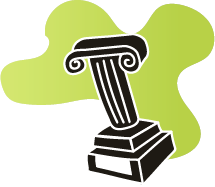Title of the resource
Title of the resource in english
Publisher
Larousse
Original language
Target and Age Group
Collège, lycée/middle school, high school
Author of the Entry:
Marta Pszczolińska, University of Warsaw, m.pszczolinska@al.uw.edu.pl
Peer-reviewer of the Entry:
Elżbieta Olechowska, University of Warsaw, elzbieta.olechowska@gmail.com
Second Peer-reviewer of the Entry:
Ayelet Peer, Bar- Ilan University, ayelet.peer@biu.ac.il
Carine Girac-Marinier (ed.)
Carine Girac-Marinier is an editor of many Larousse publications, especially Les Mini Larousse series, such as: Les expressions françaises dans votre poche, Les expressions latines dans votre poche, L'italien dans votre poche, L'allemand dans votre poche, L'espagnol dans votre poche, Les grands rois de France, Les grands écrivains français, Découvrir les Impressionnistes, Dieux et héros de la mythologie and other collective works. Since 2009 she heads the department of Dictionaries, Encyclopedias, Extracurricular Publications in the Éditions Larousse, whose production amounts to 200 titles per year.
Contents & Purpose
Le grec ancien dans votre poche is one of the numerous publications in the series Les Mini Larousse (...dans votre poche) published by Larousse. As announced in its title, the handbook is a miniature compendium of Ancient Greek language in a compact pocket format (10 x 15 cm). It contains 1000 Greek words and phrases indispensable in middle school and high school.
There are 20 short thematically organised chapters, discussing topics as follow: auto-presentation, life and death, work-life, studying, the house, arts (including the Muses), entertainment and sports, weather, country life, everyday life, clothing, city life, religion (including a compact selection of Greek gods), politics, war, the human body, health, food and drink, numbers and time expressions. Each chapter presents vocabulary relevant to the topic, mainly single words, but also optionally phrases or entire sentences. In some of the lessons, the vocabulary is accompanied by tables of illustrations, which resembles a pictorial glossary younger children might use (for example with trees, flowers, fruit, animals, colours) and facilitates memorisation. In the beginning, there is a table with the Greek alphabet with the French pronunciation. Towards the end, the book also provides a mini French-Greek glossary of 500 words.
The handbook is fully illustrated with over 300 images, comprising modern illustrations of nature as well as photographs and drawings from the cultural circle of Ancient Rome - ancient buildings, sculptures, artefacts and everyday use objects. The flyleaves of the book are adorned with photographs of Greek temples.


